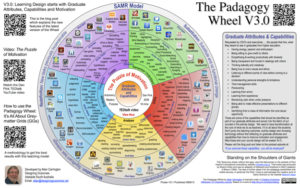Many months ago I founded what would quickly become the largest Australian ‘ed-chat’ on twitter. The ‘#aussieED’ twitter chat runs on a Sunday at 8:30pm every Sunday night. Shortly after beginning, an awesome team began forming around me and together we have literally been able to reach tens of thousands of teachers across Australia using the twitter platform. The speed of the take up has been outstanding and it has highlighted the fact that there is a genuine desire from classroom teachers to control their professional development and tailor their learning to allow them to provide tangible changes and improvements to the activities that teachers provide students in their classrooms.
The #aussieED mantra is CONNECTION, COLLABORATION and INSPIRATION. One of the greatest impacts of having teachers be in control of their own Profession Development is the ‘renaissance’ of teaching and learning that is occurring in classrooms, not only in Australia, but across the globe. I was not immune and my own teaching has undergone great changes as I react to the inspiration I have received from others.
One of the wonderful concepts that I was exposed to on twitter was Allan Carrington’s work on, ‘The Padagogy Wheel’.
The Padagogy Wheel is an infusion of a number of educational ideologies. It links the SAMR model and Blooms Taxonomy into a way that allows students to take control of their own learning path. At the core of the Padagogy Wheel are the ‘General Attributes and Capabilities’. These capabilities list the attributes that are highly desirable in the workforce and were identified by CEO’s and executives who named the qualities that they desired in graduates from higher education.
Consider this, what does an excellent student look like? How do they work? What work habits do they have? The attributes at the core of the Padagogy Wheel promotes these qualities. Contemporary pedagogy challenges us to move away from a simple pass/fail mentality and move our students into a situation where they can think deeply. We want capable students who have the attributes of creative and lateral thinking. Students who are both passionate and enthusiastic. Also, they need to have good time management skills and are able to learn from their errors. They should also be students who are able to collaborate with others and can learn from new experiences.
Using the Padagogy Wheel challenges educators to incorporate transformative pedagogy into their curriculum. This requires a mindshift away from traditional approaches and a swing towards change. The world of education is changing and so are the expectations of what students are able to do. The only constant is change. Traditional education involves teachers transmitting knowledge to a student. Simply put, quality traditional education is an effective transfer of basic facts. However, this approach does not prepare students for change. What require in a contemporary pedagogical sense in way of teaching that put students in the drivers seat, and prepares them for an unpredictable future that where their best asset will be the ability the change, adapt, learn and respond.
Allan Carrington talking about the Padogogy wheel:
“The Padagogy Wheel was born out of a desire to help teachers at the coalface of teaching. I
wanted a model that could be applied to everything from curriculum planning, development, writing learning objectives and designing student centered activities.”
http://www.unity.net.au/allansportfolio/edublog/?p=917
See you on twitter next Sunday!

Brett Salakas

Latest posts by Brett Salakas (see all)
- The META of Greta - July 3, 2020
- WHAT DO WE WANT OUR STUDENTS TO BE LIKE WHEN THEY GRADUATE FROM OUR CLASS? - February 5, 2019
- Gods, Gadgets and Greatness – Lessons from ISTE 2018 - January 30, 2019
You must be logged in to post a comment.


There are no comments
Add yours